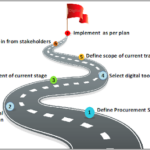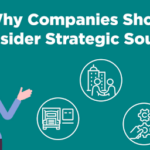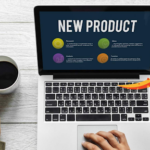Product sourcing is at the core of any successful e-commerce venture. Find the right products at the right time and you are well on your way to boosting your bottom line and building a powerful brand.
Understanding the concerns of suppliers, sourcing manufacturers, and marketplaces can be difficult. For that reason, we have compiled the following comprehensive list of strategies to make your product sourcing successful!
Maintain Trustworthy Supplier Relationships
The foundation of a strategic sourcing company is built on strong supplier relationships. Trustworthy suppliers are more than mere vendors. They are your success partners. Seek out suppliers that are candid about their manufacturing processes, costs, and potential challenges.
The more transparent they are, the better you can plot the course for your business. Regular, clear communication can head off misunderstandings and help build rapport. Don’t forget that being responsive to your supplier’s needs is as much a part of the relationship as anything else.
If the opportunity presents itself, make the trek to a supplier’s facilities to learn about their operation. Face-to-face encounters can do wonders for a relationship that a simple phone call or email never will. By forging strong relationships with your suppliers, you can solidify reliable terms with product sourcing agents.
Leverage Multiple Sourcing Channels
Diversifying your sourcing channels opens your business to a wider breadth of products. Do not stake the success of your business on a single platform. Explore manufacturer websites, trade shows, B2B marketplaces, and yes even social media to unearth new suppliers.
Manufacturer websites and directories are your primary stops for uncovering original manufacturers and reaping the rewards of exclusive deals. Also, attend trade shows pertinent to your niche. Brick-and-mortar events provide the rare opportunity to meet multiple suppliers in one locale.
Online platforms such as Alibaba, ThomasNet, and Global Sources pool suppliers across different industrial sectors. This makes it easier to sift through a range of offerings and find the best prices on products you plan to sell.
Make sure you likely already follow vendors on social media, but to better connect, join industry-related groups on LinkedIn and Facebook. They’re an opportunity to swap sourcing and product trends. Balancing your sourcing strategy across different channels makes sure you’ve always got a plan B on top of your mind.
Prioritize Product Quality and Compliance
In an e-commerce world, it’s quality or bust. Either your products meet standards or you’ll potentially face costly returns and damage to your brand’s reputation. Pair that with the need for compliance from all the product sourcing agencies from which you’ve sourced products.
Work with potential vendors to determine exactly what “quality” means in the context of what you’ll be selling. This typically includes material certifications or product testing. If you sell to different countries, make sure they comply with all relevant regulations. That can include everything from product safety standards to rules about the types of materials.
Before you decide to go forward with a purchase order, be sure to inspect the physical samples of these products. This step is designed to make sure there aren’t any potential quality control issues that you’ll face later on down the line. By prioritizing quality and compliance, you show your customers you care about them because you do!
Stay Ahead with Trend Forecasting
Trend-spotting is another key way by which you can stay ahead of the game when sourcing products, especially given the length of time it can take to put those into your store. You can begin with analyzing data. Use analytics to find fact-based answers to that question, rather than relying on subjective hunches.
Ask yourself a few questions are their behaviors changing about your products and store? Are your inquiries to potential new suppliers reflective of recent trends? Watch your target for the answers to those questions.
Again, as with product marketing consultants and consumer behavior, some reports can give you a good idea as to which categories of products to add or source for your store. Subscribe to a few that follow your niche market. Proactively identifying and acting on trends allows your business to launch profitable products quickly.
Negotiate Favorable Terms
Negotiation is a necessary skill for successful business owners. When sourcing products, know that most product sourcing services expect some negotiation. To develop your negotiation skills when sourcing products, consider researching the market. Understand the market value of the products you’re sourcing. This will provide a baseline for your pricing discussions.
If you can commit to higher volumes or longer contracts, suppliers may be willing to lower prices or make other concessions. If cash flow is your primary concern, discuss payment terms that work for both of you. This will ensure that you are getting the best price without damaging relationships with your suppliers. A successful negotiation is a win-win for both parties.
Streamline the Sourcing Process
Strategic sourcing frees time to grow other areas of your business. Streamline the process by standardizing procedures. Regulate the process for sourcing products from supplier onboarding to ordering and inventory management. E-commerce platforms, accounting software, and inventory management software can automate much of the process.
Regularly review your sourcing process and make incremental improvements. Consider implementing Lean and Six Sigma methodologies to eliminate waste and optimize operations. By making your sourcing process as efficient as possible, you’ll be saving time and money in the long run.
Test the Market with Small Orders
Before making a large financial commitment, test the market with small orders of new products. This will help you gauge interest without investing too much in unsold inventory. Try to introduce a limited quantity of new products to a test audience. Collect feedback and sales data to make informed decisions in the future.
To attract customers, purchase sample sizes from your product sourcing company. This can also serve as a market test before expanding your product line. Keep a close eye on how your new products perform. Check if they’re well-received and scale up your orders accordingly. By going small, you can reduce the risk of a new product failing to find its market.
Optimize Product Lifecycle Management
Managing the lifecycle of your products from sourcing to end-of-life is vital for running a competitive business. Maintaining a careful balance between holding enough stock to meet consumer demand without overstock situations that tie up capital.
Assessing product performance and adjusting prices up or down based on market conditions, demand, or changes in the competitive landscape. Developing a plan for unsold or returned inventory. Often, this involves running clearance sales or returning products to suppliers. By optimizing every stage of the life cycle, you can maximize profitability and minimize waste.
Bottom Line
Integrating these strategies into your e-commerce product sourcing plan can set the stage for a profitable venture. As with everything in business, effective product sourcing doesn’t happen overnight. It requires careful planning and strategic thinking. But armed with a solid sourcing strategy, you can do what you do best. And that’s to grow your business and deliver top-notch customer satisfaction.








